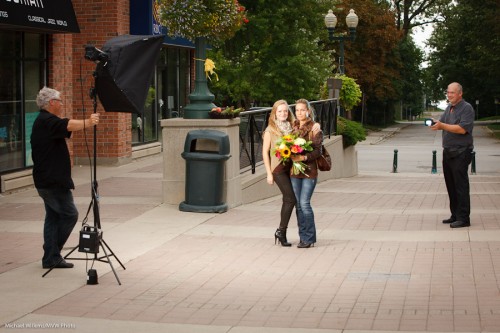When working out a photographic scenario, it is often useful to think in terms of restraints – i.e. “what to watch out for”. That can help you handle tough situations.
When using flash, especially in mixed light (e.g.outdoors) the following are the major restraints to watch for:
- Flash synch speed. When using flash, your camera cannot exceed the speed beyond which the shutter no longer fully opens. This is around 1/250th second on most SLRs. (Tip: open the aperture on your camera all the way at 1600 ISO and point at the sky. Check shutter speed. Now turn on the flash, and see what the shutter speed is now reduced to – that is your flash sync speed).
- Flash range. Your flash range gets smaller the more you close the camera’s aperture. The guide number divided by the aperture tells you the full power range. (Tip: the flash may display it on the back – most modern flashes do, when the head is pointed straight forward.)
- Usable Aperture Range. On the one hand, you want a small aperture number (a large aperture, say f/2.8) for blurred backgrounds – but that may be difficult due to constraint (1) above. On the other hand, you may need a large aperture number (a small aperture, say f/11) to make backgrounds darker, but that may be difficult due to constraint (2)
Geez, life is full of impossibilities, isn’t it!
But if you keep those constraints in mind at all times, you will know when you are about to run into trouble – conversely, staying clear of those constraints guarantees trouble-free shooting. Like in this recent shoot:

